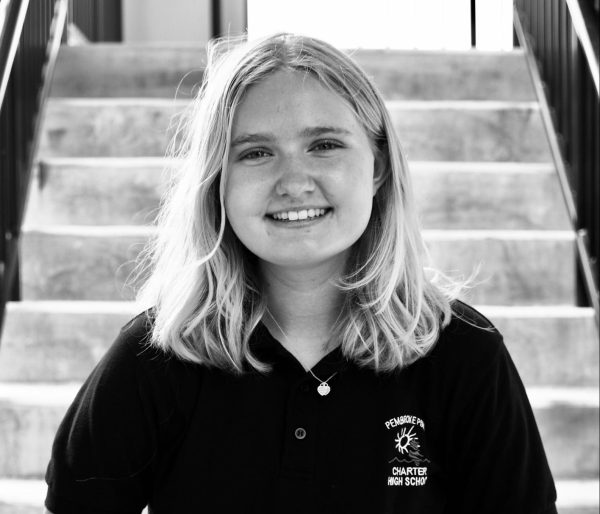Surge in COVID Cases Leaving People to Wonder, Is This The New Normal?
March 1, 2022
COVID-19 cases surged after winter break as new variants took shape. The highly contagious Omicron variant posed a large threat to schools, which were some of the biggest super spreaders. Although the booster shot is effective in reducing severe cases and the risk of hospitalization, with such high rates of transmission, contracting the Omicron variant was practically inevitable.
Pembroke Pines Charter High School experienced a large percentage of COVID cases following winter break among students and teachers alike. Sophomore Karly Acevedo expressed her own classroom experience, stating, “[t]he majority of people absent in my classes are students rather than teachers at this point.” Karly also conveyed feelings of uncertainty in terms of normalcy. “What is normal at this point? ” Karly asked. “There will never be a sense of normalcy again. It seems that every other week there is a new variant.” Similarly, sophomore Millagros Ortega exhibited signs of concern regarding classroom cases. “Teachers are still out sick. Two of my teachers have COVID, I have friends who have it, this is still a big problem that is affecting everyone…”
In the month of January, cases peaked with over 700,000 total in the United States (CDC). In comparison, as of February 18, about 100,000 positive cases were reported. Although not completely back to normal, for sophomore Giuliana Mudryj, a slight return to a normal routine is showing. “Now, even though there are still cases, there was a point when 16, 17, even 18 teachers were out sick. Now, though, less teachers have COVID and there seems to be a decrease in cases. I think things are starting to return to normal,” she states.
Despite the decrease in cases, masks and vaccinations are still highly recommended and normalcy still cannot be fully achieved. As said by Sheela Shenoi, MD, MPH in an interview with Yale Medicine, “I hesitate to say that we are approaching a post-COVID world when so many are still being ravaged by this virus…If there is anything we should have learned, it is that we are all interconnected; what happens in one part of the world affects everybody.” Dr. Shenoi also shed some light on how safe vaccinated individuals are in terms of masks, explaining that they are more protected without a mask and that it is better to be safe than sorry; masks can’t hurt.
Freshman Annabelle Acevedo also expressed hesitancy in terms of defining normalcy. “I would say that there is some sense of normalcy, but it’s hard to say because with each time [that] cases fall I feel that way. With spring break coming up, I think cases will rise again. It’s just hard to say.” Annabelle has received two COVID exposure notifications this year, however, that doesn’t mean she feels that COVID is not all around her.
Freshman Isabella Cioffi explained the way the school has changed from January to February, “I do feel that things are returning to normal. Half of the school no longer wears masks, classes are normal, I mean, I can now eat comfortably without a mask. However, unfortunately, I feel that we aren’t going to return to full normalcy until there’s zero COVID cases.”
Mrs. Torres, curriculum specialist, also feels that the amount of COVID cases has decreased in PPCHS, “…there has been a sharp decrease in the number of cases from January until now.” In terms of a return to normalcy, Mrs. Torres expressed, “[t]he decrease in cases is definitely allowing us to move towards more normalcy. We’re seeing more events go back to normal like athletics, junior ring ceremony, prom, graduation, etc.” Mrs. Torres also shared her thoughts regarding what the future holds for COVID: “I’m not sure that it won’t be a worry at all anymore, but I think it might be more common like the flu. I think it will be something we continue to deal with moving forward.”
Although, in many ways, COVID still rages on and continues to impact everyone to extreme measures, there is not much to be done but to continue to follow the recommended guidelines. With cases continuing to decrease, there is still hope that this will be the last straw of COVID, yet, remaining hesitantly hopeful may be the only way to make it through.






![Junior live streamers and Varsity Football players: Josiah Knight [left] and Jahsai Juste [right] posing together for a picture before their home game against North Miami High School on Friday, September 12th.](https://ppchsnews.com/wp-content/uploads/2025/09/Adobe-Express-file-300x206.jpg)
